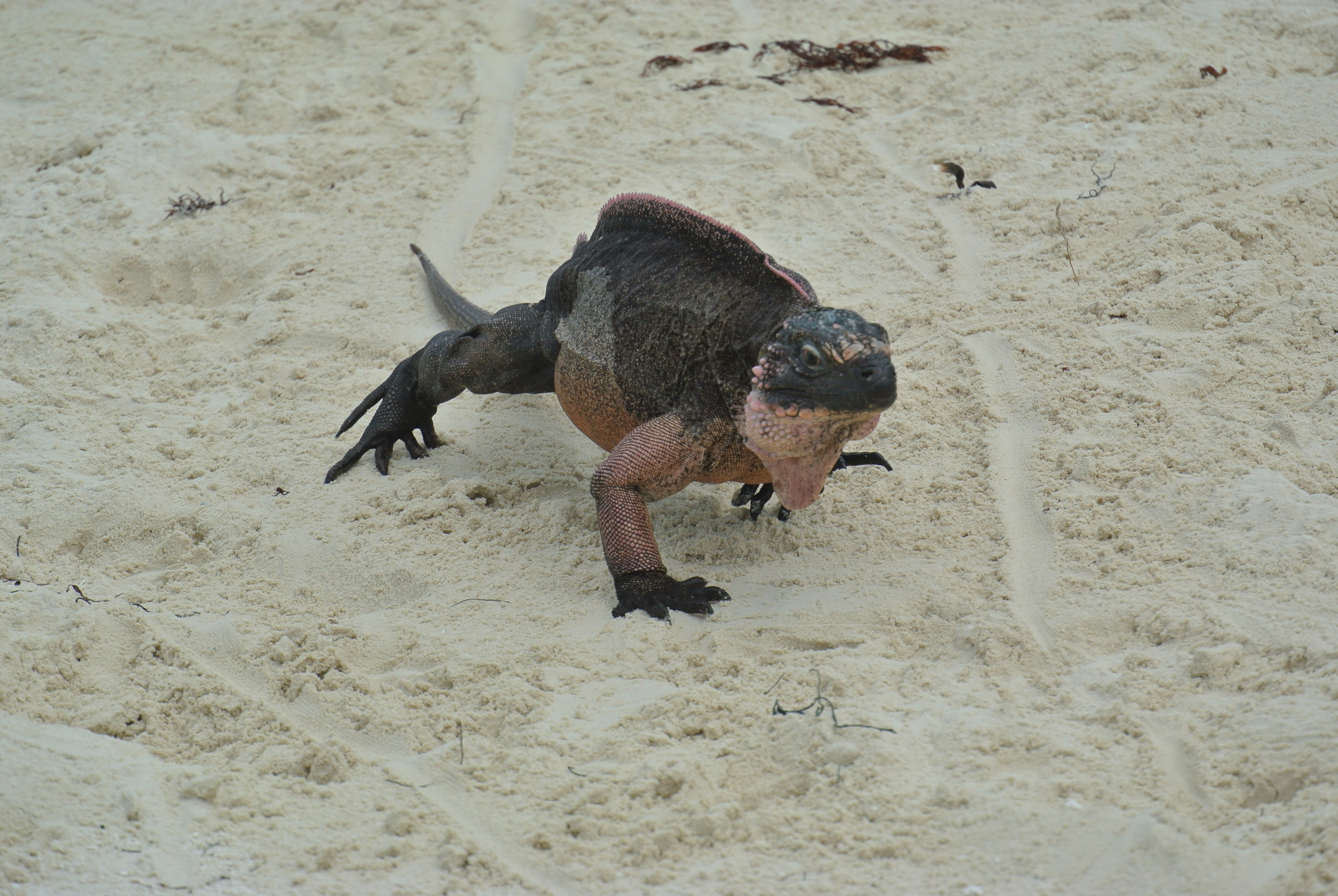Tooth III is a Livingston 7.5. This is a hard dinghy with a catamaran hull. They are very stable boats and very useful boats. They are a bit wet when motoring or rowing into a seaway, as they have relatively low freeboard so any splash or spray will come right in and soak everyone, but they certainly are a good dinghy.
We were anchored off of Nassau when we decided our next destination would be Allen's Cay in the Exumas. This destination was only 37 miles away from us, but it was upwind. The winds were forecasted to be 20-25 knots for the next several weeks, so we figured that there was no point in waiting for better weather since it wasn't going to change for a while. We were also told that on the flats of the Bahamas, the waves "are like waves in the ICW, the water is too shallow for them to develop so they won't be more than a few feet."
With that in mind, we set out it make the windward trek towards Allen's Cay, and we decided that we would tow Tooth III since we were going to be sailing over shallow flats. The idea was that if we ran aground, we would need to row out a kedge anchor, and to do that we would need Tooth III in the water. Since the seas would be relatively calm, we figured we would just tow him along.
Well, the seas were not calm and it is much deeper than charted. Everywhere on the flats, Conch Spit, Yellow Bank, and White Bank is around 15-20 feet deep. We sailed over waters charted as 5.7 feet and had 8 feet under the keel. We draw 6.5, so the water there was 14.5 feet!
Not only was the water deeper, the seas were much higher than in the ICW! We were beating in to 6+ foot waves, and poor Tooth III was being dragged through all of this. Spray would slowly make its way into his hull and I would have to heave to, pull him up to us, and bail him out. When he was empty, he sat higher and kept most of the water out. As he filled, he would sit lower and then waves would actually break into him, filling him much more quickly.
At one point, we tacked and then looked back to make sure Tooth III was doing ok, but he wasn't there! We pulled the painter in and when we got to the end, the line had snapped. Poor Tooth III had quietly stayed behind, probably swamped and sank to the bottom, if not awash with the seas. We turned around and began searching for him, but it was futile. The strong winds made every whitecap around us look like him, and if he were awash, we would never see him in the seas. We searched for an hour, but sadly had to call it off and return on our voyage, without Tooth III.
Tooth III was a very good dinghy, and we promptly began searching for a replacement Livingston 7.5 dinghy, but so far have not found one yet.
This experience taught us a valuable lesson that we hope you can learn from without going through it yourself. It turns out that losing a dinghy is very common and it is especially common when towing. Painters break quietly and uneventfully, leaving your dinghy behind as you work your way forward.
The lessened learned is never tow your dinghy over long distances. If you tow, look back at your dinghy every 10 minutes to make sure it is still there. Have multiple painters attaching to multiple points on it.
When we tow Sophia, our inflatable dinghy, we have a massive painter tied to her bow. A stern line tied to the painter with a rolling hitch (should the attachment point at the bow fail) and a second painter tied through the oar lock (so if the primary painter fails, Sophia would be towed sideways until we notice it and rectify the situation.).
Ideally, always carry your dinghy in davits or on your deck, where they are out of the water and in view of you as you are sailing. If you must tow, have redundancy in your towing system so that should anything fail, you will still have your dinghy in tow.










